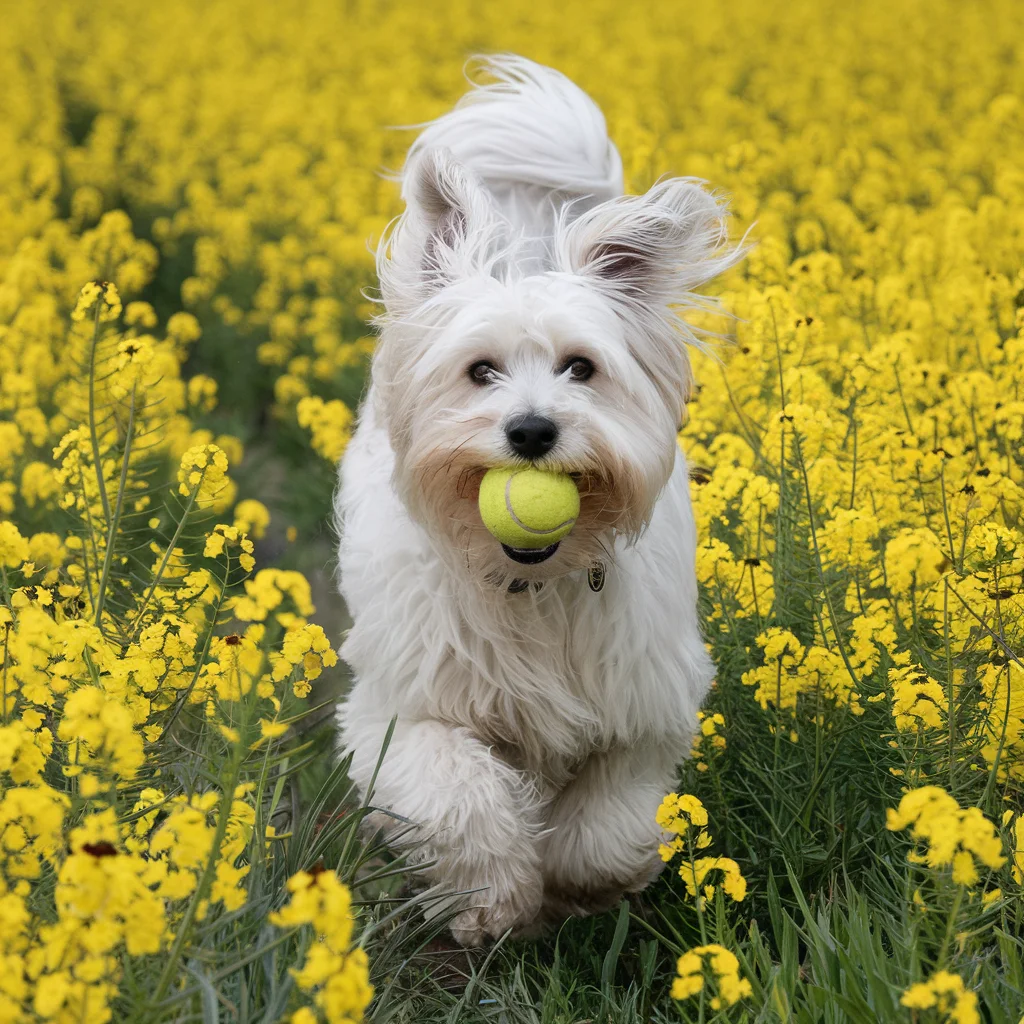Tennis balls have become one of the most beloved toys for dogs of all sizes and breeds. If you’ve ever thrown a tennis ball and watched your furry friend sprint after it with boundless energy, you might have wondered what makes this simple toy so irresistible.
In this blog post, we’ll delve into five key reasons why dogs go crazy over tennis balls and how you can manage their enthusiasm for this classic plaything.
What Makes Tennis Balls So Appealing to Dogs?

Understanding why dogs love tennis balls involves exploring their natural instincts, sensory perceptions, and the joy they find in play. Here are the five primary reasons:
The Thrill of the Chase
One of the most exciting aspects of tennis balls is the thrill of the chase. Dogs are instinctive hunters, and this natural predatory behavior is still present in many breeds.
When a tennis ball rolls or bounces away, it triggers their hunting instincts, causing them to pursue the ball with enthusiasm.
- Chasing Mechanism: Dogs are wired to chase moving objects. A ball that rolls or is thrown away simulates prey behavior, which can invoke a strong response.
- Endorphin Release: As they chase, dogs experience a surge of endorphins, creating a sense of happiness and excitement. This can turn a simple game of fetch into an exhilarating experience for them.
The Yellow Color Theory
Have you ever noticed that tennis balls are typically bright yellow? This color plays a significant role in why dogs love them. While humans see a spectrum of colors, dogs have dichromatic vision, meaning they primarily see two colors: blue and yellow.
- Vivid Visibility: The bright yellow of a tennis ball stands out in various environments, making it easier for dogs to spot. This high contrast helps them locate the ball quickly, enhancing their play experience.
- Attractiveness: Dogs are naturally attracted to bright colors, and the vibrant hue of tennis balls captures their attention, making them a favorite choice for playtime.
Physical Activity and Hunting Instincts
Dogs thrive on physical activity, and playing with tennis balls provides an excellent outlet for this energy. Fetching is not just a game; it helps dogs stay fit, healthy, and mentally stimulated.
- Exercise Benefits: Regular play with tennis balls can contribute to a dog’s physical fitness, reducing the risk of obesity and related health issues.
- Mental Engagement: The combination of running, retrieving, and returning the ball offers mental stimulation. Dogs must track the ball’s movement, which engages their cognitive functions.
Interesting Texture and Size
Tennis balls are not only visually appealing; their texture and size also make them enticing for dogs.
- Mouthfeel: The fuzzy exterior of a tennis ball is satisfying for dogs to mouth. This texture provides sensory feedback that can be enjoyable, especially during chewing.
- Perfect Size: The standard size of a tennis ball is suitable for most dogs. It’s easy for them to grip, carry, and retrieve, making it a practical choice for play.
Mental Stimulation and Exploration
Playing with tennis balls goes beyond physical activity; it also offers dogs opportunities for mental engagement.
- Problem-Solving Skills: When dogs play fetch, they learn to track the ball’s trajectory and anticipate where it will land, enhancing their problem-solving abilities.
- Exploratory Behavior: The act of searching for the ball can stimulate a dog’s curiosity, encouraging them to explore their environment further.
Managing Excessive Love for Tennis Balls

While tennis balls are fantastic toys, some dogs may develop an obsessive love for them. Here are some strategies to maintain a balanced play routine:
Switch Things Up
To prevent your dog from becoming overly fixated on tennis balls, it’s essential to introduce variety into their playtime.
- Different Toys: Incorporate a range of toys, such as ropes, frisbees, or squeaky toys, to keep your dog engaged and interested.
- Rotating Toys: Consider rotating their toys every few days to maintain novelty and excitement. This prevents boredom and ensures that the tennis ball doesn’t become their only source of entertainment.
Explore Alternative Activities
Engaging your dog in diverse activities can reduce their fixation on tennis balls while promoting physical and mental health.
- Agility Training: Set up an agility course in your backyard. This activity combines physical exercise with mental stimulation, allowing your dog to learn new skills while having fun.
- Puzzle Toys: Invest in interactive toys that challenge your dog’s intellect. Puzzle toys can keep them engaged and provide rewards for their efforts, encouraging them to explore and problem-solve.
Positive Reinforcement Techniques
Using positive reinforcement can help manage your dog’s love for tennis balls while promoting balanced behavior.
- Rewarding Variety: Whenever your dog engages in activities beyond fetching, reward them with treats, praise, or additional playtime. This encourages them to explore different forms of play.
- Training Sessions: Incorporate training into playtime. Teach your dog commands like “sit” or “stay” before allowing them to fetch. This keeps their mind engaged and reinforces positive behavior.
Conclusion
Tennis balls hold a special place in the hearts of many dogs, and for good reason. The thrill of the chase, the bright yellow color, the physical activity involved, and the interesting texture all contribute to their appeal.
Understanding these factors allows dog owners to appreciate their pets’ love for tennis balls while managing any excessive behavior effectively.
By incorporating a variety of toys and activities into your dog’s playtime, you can foster a well-rounded and stimulating environment. Remember, the key to a happy, healthy dog lies in balancing their playtime and keeping them engaged with diverse activities.












